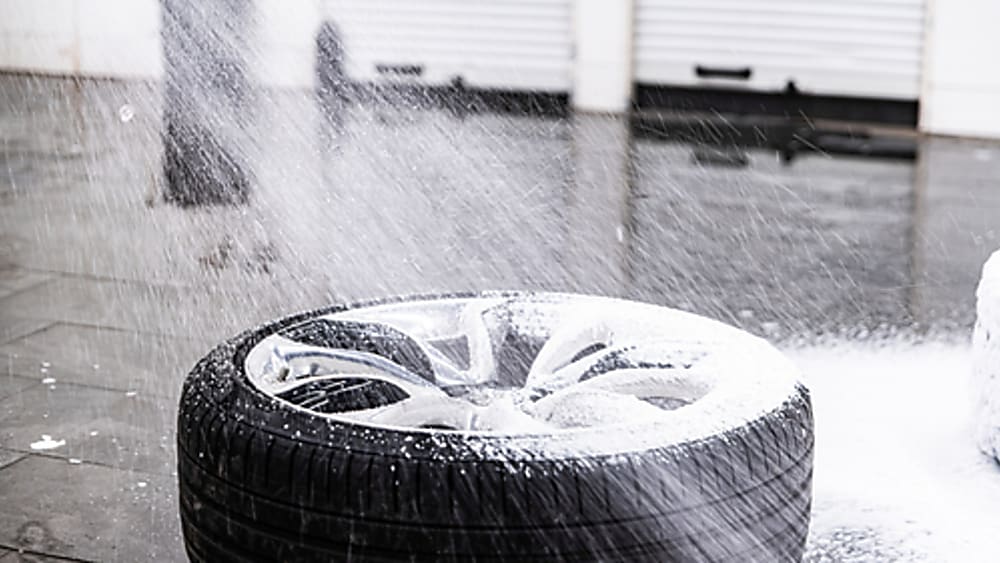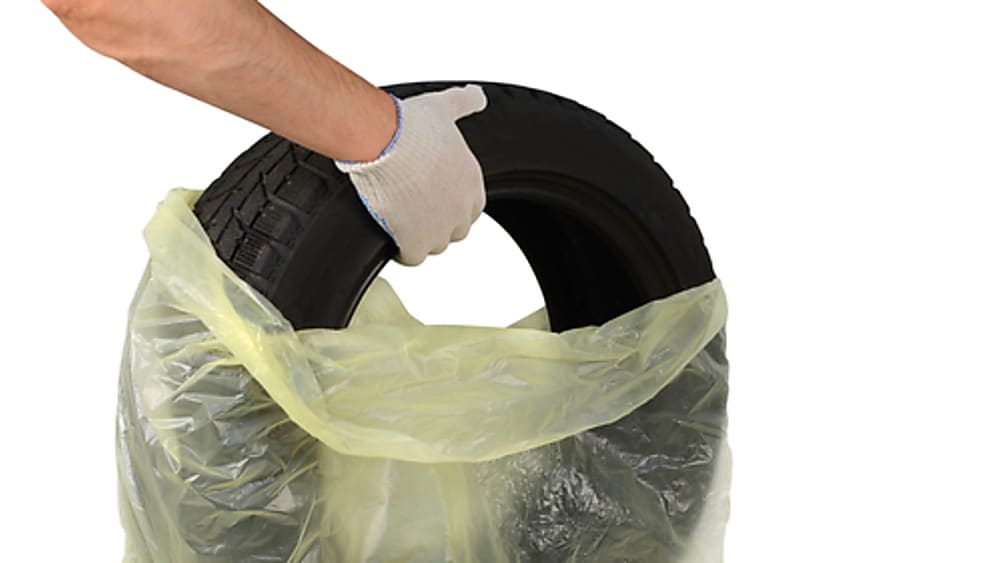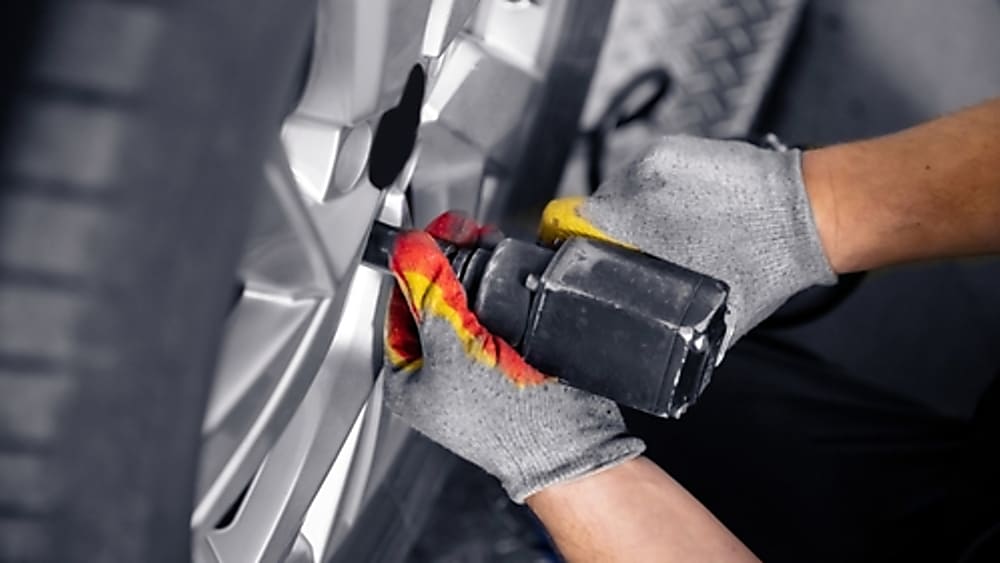Tire Maintenance & Safety
How to Store Winter Tires in the Off-Season

Best price guarantee
Tire replacement coverage
24/7 roadside assistance
Easy returns
Tire Maintenance & Safety

As the seasons change, many vehicle owners swap their winter tires for summer or all-season alternatives. Proper storage of off-season tires is crucial to maintaining quality and extending lifespan.
Neglecting to store winter tires correctly can lead to premature wear, damage, and reduced performance when needed again. Taking the time to follow best practices for off-season tire storage can save money and ensure a smoother transition when the colder months return.
This article will guide you through the essential steps for storing your winter tires during the off-season. By understanding the importance of proper storage and implementing these techniques, you can keep your tires in optimal condition and ready for use when winter arrives.
Off-season tire storage refers to the proper care and placement of tires that are not in use during certain times of the year. Whether you swap out summer tires for winter ones or vice versa, storing your off-season tires correctly helps maintain their performance and longevity. Proper storage prevents premature wear, cracking, and flat-spotting, ensuring your tires are ready to perform when the seasons change.
Proper off-season tire storage involves several key elements:
By following these best practices, vehicle owners can ensure their winter tires remain in excellent condition during the off-season. This extends the life of the tires and guarantees they are ready to provide optimal performance when the winter season returns.
Preserving winter tires during the off-season requires careful attention to their storage conditions. Begin by selecting a storage location that maintains a stable, cool temperature with minimal humidity. It is crucial to keep the tires shielded from UV exposure, which can accelerate rubber degradation. Also, avoid areas near equipment that emits ozone, like specific motors, to protect the tire's structural integrity.
The next vital step is preparing the tires. Start by thoroughly washing each tire to eliminate accumulated dirt and brake dust, which can corrode them over time. Then, conduct a meticulous inspection for any signs of damage, including cracks or bulges, and ensure the tires are fully dry to prevent moisture-related issues.
The choice of storage materials plays a significant role in maintaining tire quality. Enclose each tire in a robust, airtight plastic bag to lock in essential oils within the rubber and prevent exposure to environmental contaminants. While tire totes offer convenience for transport and an added layer of protection, they should always be used with airtight bags for optimal storage.
Consideration of tire positioning during storage is also essential. For tires not mounted on rims, stacking them flat with regular repositioning to balance weight distribution works. Tires mounted on rims benefit from being stored upright or hung on racks to help preserve their shape. Regardless of the method, it's essential to maintain a safe stacking height to avoid potential mishaps and ensure the tires remain in peak condition for the next season.

Start by giving your tires a good wash with mild soap and water to clear away dirt, grime, and anything that might break down the rubber over time. Pay extra attention to the treads and sidewalls to make sure all road residue is removed. This simple step helps maintain the integrity of your tires and prevents premature wear.
Brake dust, which can be corrosive, should also be thoroughly cleaned to avoid long-term damage. Check that every groove is debris-free, as trapped particles can lead to uneven wear. Once clean, let the tires dry completely in a well-ventilated area, away from direct sunlight or heat, to prevent moisture buildup.
After cleaning, inspect each tire for signs of wear or damage. Look for cuts, embedded objects, or irregularities that could impact performance. If you spot any major issues, consider replacing the tire for safety.
A thorough cleaning and inspection routine extends the life of your tires and ensures they’re ready to perform when you need them again. Proper care during storage helps prevent damage and keeps your tires in top shape for the next season.
Choosing the right spot to store your winter tires is key to keeping them in great shape for the next season. Look for a stable environment with moderate temperatures and low humidity—places like a basement or a climate-controlled room work best. These areas help protect your tires from harsh conditions that could lead to premature wear.
Sunlight is another factor to consider. Prolonged exposure to UV rays can cause the rubber to dry out, harden, and eventually crack. To prevent this, keep your tires away from direct sunlight or reflective surfaces that could intensify light exposure. This simple step helps maintain their flexibility and overall condition.
It’s also important to store tires away from equipment that emits ozone, like certain electronic devices and motors, as ozone can break down rubber compounds over time. Keeping your tires in a clean, cool, and protected space will ensure they stay in top shape, ready to hit the road when winter rolls around again.

Choosing the right materials for storing your winter tires is essential to keeping them in top shape during the off-season. Start by wrapping each tire in a durable, moisture-resistant cover to protect it from dust, dirt, and environmental exposure that could lead to rubber deterioration. A well-protected tire maintains its flexibility and performance when winter rolls around again.
Consider using specialized tire storage solutions, such as tire totes or racks, which make transportation easier while preventing unnecessary wear. Just be sure any covering allows for some airflow to avoid trapping moisture, which can cause damage over time.
When selecting storage materials, focus on options that shield tires from physical damage and environmental elements. A breathable yet protective barrier will help keep tires clean, dry, and ready to hit the road when temperatures drop again.
How you store your winter tires is key to keeping them in great shape for the next season. If your tires are not mounted on rims, stacking them flat is a good option—but be sure to rotate their position occasionally to prevent pressure points that could cause deformations over time.
Storing tires that are still mounted on rims upright is the better choice. This helps reduce stress on the sidewalls and keeps the rims in good condition. A tire rack can make organization easier while providing the necessary support to prevent strain. If you have the space, hanging rim-mounted tires is another option, as long as they’re securely supported to avoid sagging.
No matter which method you choose, stability is key. Avoid stacking tires too high to prevent tipping, which could lead to unnecessary damage. By following these simple storage tips, you can extend the life of your winter tires and ensure they’re ready to go when the cold weather returns.
Keeping an eye on your stored tires ensures they stay in great shape during the off-season. If your tires are mounted on rims, maintaining the recommended air pressure is crucial to prevent flat spots that could affect their shape. Use a reliable pressure gauge to check them occasionally, as temperature fluctuations can impact inflation levels.
Regular inspections can help catch potential issues early. Look for surface cracks, embedded debris, or any other signs of wear that may have been overlooked before storage. If your tires are sitting in one place for an extended period, rotating them occasionally can help maintain their shape and performance.

By taking these simple steps, you can extend the life of your tires and ensure they’re ready to perform when winter returns. Proper storage not only protects your investment but also saves you money in the long run by preventing unnecessary wear and damage. When it’s time for new tires or expert advice, SimpleTire is here to help you find the best options at the best prices—making tire maintenance easy and stress-free.
Search By